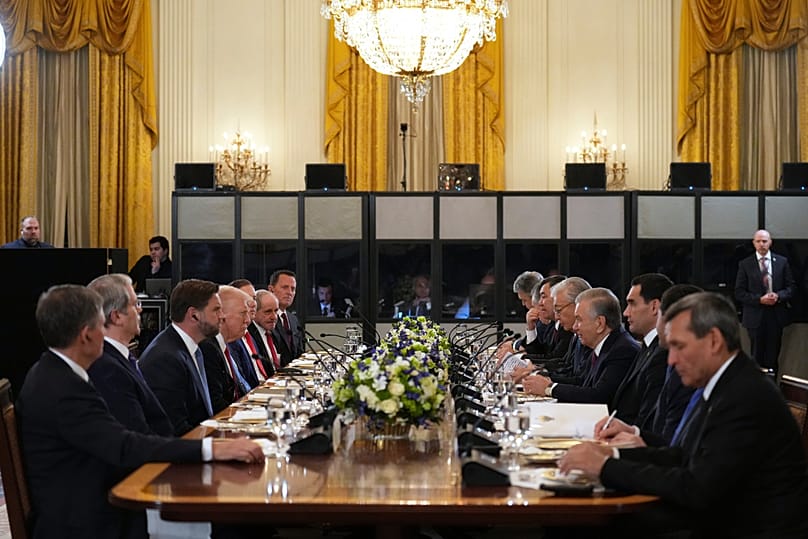The White House meeting came after Trump managed to at least temporarily ease tensions between the US and China over the export of rare earth metals, a major source of contention in their trade talks.
US President Donald Trump met with leaders of five Central Asian countries at the White House on Thursday as he intensifies his hunt for rare earth metals needed for high-tech devices, including smartphones, electric vehicles, and fighter jets.
Trump and officials from Kazakhstan, Kyrgyzstan, Tajikistan, Turkmenistan, and Uzbekistan held bilateral meetings in the Oval Office before a working dinner.
"One of the key items on our agenda is critical minerals," Trump said at the dinner with the leaders.
He stated, "We're strengthening our economic partnerships, improving our security cooperation, and expanding our overall bonds."
“These nations were once home to the ancient Silk Road connecting East and West,” Trump said, while noting that “sadly, previous American presidents neglected this region completely.”
The White House visit came after Trump managed to at least temporarily ease tensions between the US and China over the export of rare earth metals, a major source of friction in their trade talks.
Last month, Beijing expanded export restrictions over vital rare earth elements and magnets before announcing, after Trump-Xi talks in South Korea last week, that China would delay its new restrictions by one year.
Washington is now seeking new ways to circumvent China in the critical minerals market, which accounts for nearly 70% of the world’s rare earth mining and controls roughly 90% of global rare earth processing.
Legislation to repeal Soviet-era trade restrictions
Secretary of State Marco Rubio welcomed the Central Asian leaders at the State Department on Wednesday to mark the 10th anniversary of the C5+1 and to plug the potential for expanding the countries’ economic ties to the US.
“We oftentimes spend so much time focused on crises and problems—and they deserve attention—that sometimes we don’t spend enough time focused on exciting new opportunities,” Rubio said.
“And that’s what exists here now: an exciting new opportunity in which the national interests of our respective countries are aligned.”
Thursday's meetings also came after a bipartisan group of senators introduced legislation Wednesday to repeal Soviet-era trade restrictions that some lawmakers say are holding back American investment in the Central Asian nations, which became independent with the 1991 collapse of the Soviet Union.
According to Trump administration officials, deepening the US relationship with the countries is a priority, a point they have made clear to the Central Asian officials.
The president’s “commitment to this region is that you have a direct line to the White House, and that you will get the attention that this area very much deserves,” US Ambassador to India Sergio Gor, who also serves as Trump’s special envoy to South and Central Asia, told the Central Asian officials on Wednesday.
Central Asia holds deep reserves of rare earth
For decades, the grouping of countries, referred to as the “C5+1,” has largely focused on regional security, particularly in light of the US military presence and later withdrawal from Afghanistan, China’s treatment of ethnic Uyghur Muslims in Xinjiang, and attempts by Russia to reassert power in the region.
Despite this, China and Russia have long benefited from Central Asia's vital mineral exports.
According to country-level trade statistics published by the online data platform Observatory of Economic Complexity, Kazakhstan shipped $3.07 billion in key minerals to China and $1.8 billion to Russia in 2023, compared with $544 million to the US.
The Central Asia region holds deep reserves of rare earth minerals and produces roughly half the world’s uranium, which is critical to nuclear power production.
















